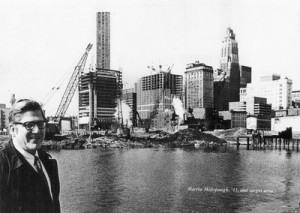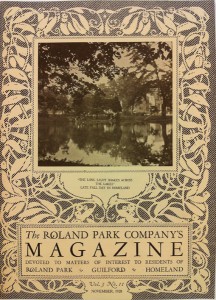Part of a monthly series of posts highlighting uncovered items of note, and the archival process brought to bear on these items, as we preserve, arrange, and describe the Roland Park Company Archives.

Special Collections was delighted to learn last month that we have been awarded a “Hidden Collections” grant from the Council on Library and Information Resources to process the records of the Roland Park Company and Martin L. Millspaugh. The grant will enable us to hire a full-time, professional Project Archivist for 12 months. The principal work of the Project Archivist will focus on the arrangement and description of around 450 cubic feet of the paper records of the Roland Park Company—the landmark suburban development company whose history we have chronicled in earlier posts like this one—and 50 cubic feet of papers documenting the career of Martin L. “Marty” Millspaugh, a celebrated Baltimore developer and urban renewal consultant, widely known for overseeing the development of Baltimore’s Inner Harbor.
In addition to the processing work, this project has a number of additional components that are a source of excitement around the office. The Project Archivist will be working with Archives staff to appraise and accession the electronic records of Mr. Millspaugh like emails, word processing documents, and web content, since his later career bears the  influence of the digital age. And the Project Archivist will be collaborating with the Friends School of Baltimore to supervise high school students in the research of aspects of the Roland Park Company records, a project that will enhance description and understanding of that richly detailed collection and provide the students a unique exposure to primary source material.
influence of the digital age. And the Project Archivist will be collaborating with the Friends School of Baltimore to supervise high school students in the research of aspects of the Roland Park Company records, a project that will enhance description and understanding of that richly detailed collection and provide the students a unique exposure to primary source material.
To ensure the efficient and comprehensive preservation and processing of these collections during the project cycle, both the Roland Park Company Records and the Martin L. Millspaugh Archives will remain closed until March 2014. We look forward to that date, when we will open these collections to our worldwide community of researchers so that deeper insight can be gained from two important moments in the history of Baltimore urban development.
